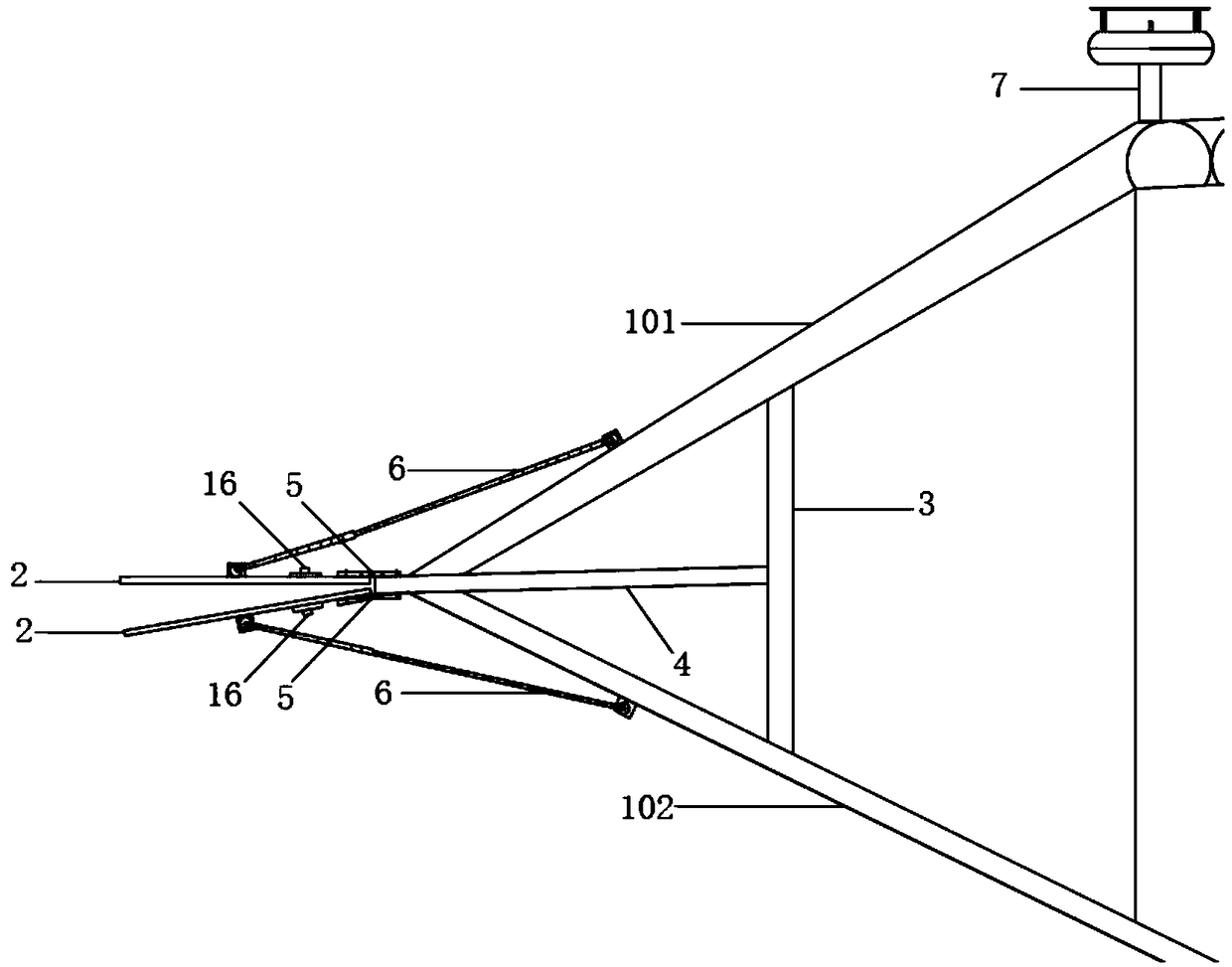Active control system and method for improving large-span bridge wind-resistant performance
An active control system, large-span technology, applied in the control of using feedback, bridges, bridge parts, etc., can solve the problems of small effect and different wind-induced vibration mechanisms, to improve service life and improve wind resistance stability. , the effect of good driving comfort
- Summary
- Abstract
- Description
- Claims
- Application Information
AI Technical Summary
Problems solved by technology
Method used
Image
Examples
Embodiment 1
[0039] Wherein, the overall structural diagram of embodiment one is as follows Figure 1a As shown, the structure diagram of the adjustment mechanism is shown in Figure 1b shown;
[0040] Figure 1b The stroke environment detection processor 7 is installed on the bridge deck, and the central controller installed in it is embedded with an angle conversion program. The wind environment detection processor 7 measures the wind environment of the main girder in real time and transmits the signal to the central controller. The angle conversion program in the central controller can be programmed in advance so as to convert and output the movable deflector 2 and the movable center in real time. The angle that the stabilizing plate 14 needs to rotate under different wind environments and the length that the hydraulic numerical control telescoping rod needs to be extended or shortened, the central controller sends a signal to start the device in real time to ensure that the movable de...
Embodiment 2
[0045] The overall structure diagram of embodiment two is as follows Figure 2a As shown, the structure diagram of the adjustment mechanism is shown in Figure 2b shown;
[0046] The basic principle of the second embodiment is the same as that of the first embodiment, and the signal transmission and accessory cooperation paths are: wind environment detection processor 7 → hydraulic numerical control telescopic rod 6 → movable deflector 2 → angle sensor 16 → wind environment detection processor 7 Wind environment detection processor 7 → central hydraulic numerical control telescopic rod 15 → movable central stabilizing plate 14 → angle sensor 16 → wind environment detection processor 7, the specific connection and operation principle between each accessory are the same as embodiment one, no more details .
[0047] The adjustment mechanism includes a rotary bearing outer ring 8, a rotary bearing inner ring 9, and a rotary bearing shaft 10. The rotary bearing outer ring 8 is a ...
Embodiment 3
[0049] The overall structure diagram of embodiment three is as follows Figure 3a As shown, the detailed structure diagram of the rotatable deflector is shown in Figure 3b shown;
[0050] In addition to the movable deflector 2 and the movable central stabilizing plate 14, the accessories used in the third embodiment also adopt the wind environment detection processor 7, the hydraulic numerical control telescopic rod 6, and the angle sensor 16 used in the first and second embodiments. The connection, operation, and signal transmission path principles between the accessories are the same as those in the first and second implementations, and will not be repeated here.
[0051] The movable deflector 2 runs through the gap between the upper steel plate 101 of the fish mouth and the lower steel plate 102 of the fish mouth. 102 is provided with a hydraulic numerical control telescopic rod 6, the hydraulic numerical control telescopic rod 6 is respectively hinged with the movable d...
PUM
 Login to View More
Login to View More Abstract
Description
Claims
Application Information
 Login to View More
Login to View More - R&D
- Intellectual Property
- Life Sciences
- Materials
- Tech Scout
- Unparalleled Data Quality
- Higher Quality Content
- 60% Fewer Hallucinations
Browse by: Latest US Patents, China's latest patents, Technical Efficacy Thesaurus, Application Domain, Technology Topic, Popular Technical Reports.
© 2025 PatSnap. All rights reserved.Legal|Privacy policy|Modern Slavery Act Transparency Statement|Sitemap|About US| Contact US: help@patsnap.com



